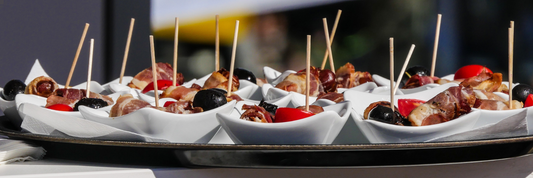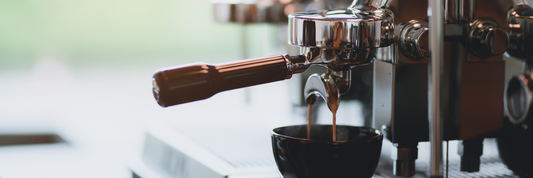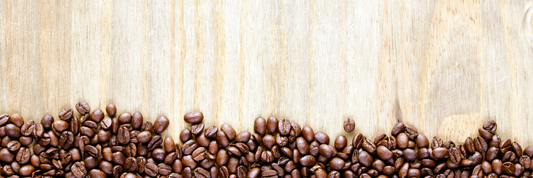Swedish coffee culture is a rich tapestry woven with centuries-old traditions, social rituals, and a profound appreciation for coffee. Central to this culture is the concept of "Fika," a unique Swedish practice that goes beyond just drinking coffee. This research article delves into the history of Fika, the art of making Swedish coffee, and the typical side dishes that accompany this cherished tradition.
What Is Fika in Sweden? A Cultural Tradition That Goes Beyond Coffee

“Fika” (fee-ka) is both a noun and verb in Swedish, imbued with cultural significance that far exceeds the simple notion of a “coffee break.” Fika represents a deliberate pause in the day — a moment focused on slowing down, connecting with others, and savoring one’s surroundings.
This tradition traces its roots back to 19th-century Sweden, intertwining with daily rituals to support a balanced work-life structure. The Swedish people embraced fika as an antidote to the fast pace of life, fostering an environment where conversations and relationships could flourish over a cup of coffee.
Why Fika Is Important in Swedish Culture
Fika is taken seriously and practiced regularly, often occurring twice a day. This tradition is not merely about drinking coffee; it encourages a sense of community, mindfulness, and emotional well-being. Fika is a time for both individuals and groups to pause, share experiences, and reflect, making it a cherished ritual observed in homes, offices, and cafés alike.
The significance of fika in Swedish culture cannot be understated. It promotes the idea of putting down one’s work to engage with the present, whether that's with colleagues at the office or friends at a cozy café. In a world that often emphasizes productivity, the practice of fika champions the importance of human connection and reflection.
The History of Fika
Origins and Evolution
The word "Fika" originates from a 19th-century Swedish slang inversion of the syllables in "Kaffe," an old spelling of coffee. However, Fika represents much more than the beverage itself; it is a cultural institution rooted in social interaction and relaxation.
Early Beginnings
Coffee was introduced to Sweden in the late 17th century and quickly became popular. By the 18th century, coffee houses were burgeoning in Swedish cities, becoming hubs of social and intellectual exchange. Despite periodic bans on coffee by Swedish authorities due to its perceived negative social impact, the beverage’s popularity persisted.

Modern Fika
Today, Fika is an integral part of Swedish daily life, often occurring twice a day—once in the morning and once in the afternoon. It is a time to pause, socialize, and enjoy a break from the day’s activities. Whether at work, at home, or in cafes, Fika serves as a moment to connect with others over a cup of coffee and something sweet.
What are the Benefits of Fika Break?
- Fika break can boost productivity and focus. Contrary to the notion that breaks might disrupt work.
- Fika can improve happiness through connection.
- Improves happiness through connection
- Foster a sense of community and collaboration as everybody takes a break away from their screens and works to chat.
- Reduced stress when people step away from the desk and enjoy a warm beverage. This can lower stress levels because it's an opportunity to breathe and reset.

What Do Swedes Typically Eat and Drink During Fika?
Swedish Coffee Culture (Kaffe in Sweden)
Sweden ranks among the top coffee-consuming nations globally, leading the world in coffee consumption per capita. Traditional Swedish coffee, or “kaffe,” is typically strong, black, and served in small mugs. While espresso may be popular elsewhere, the standard fare in Sweden often consists of light roast, filter coffee — simple yet deeply satisfying.
Coffee plays a pivotal role in the fika experience, inviting both everyday enjoyment and moments of shared serenity. The focus is on craftsmanship, quality, and connection, elevating the act of drinking coffee from a mere routine to a cultural ritual.
Common Fika Treats
No fika experience is complete without delicious treats. The most iconic fika pastry is the kanelbulle, or cinnamon bun, which is renowned for its rich flavor and sticky sweetness. Beyond kanelbullar, one might find an array of baked goods such as cardamom rolls, cookies, and sponge cakes all accompanying the coffee or tea.
Some opt for lighter options during fika, such as open-faced sandwiches or fresh fruit, demonstrating that fika encompasses a variety of culinary offerings. The common thread is the spirit of indulgence and connection, making the act of sharing food a key aspect of this tradition.
Fika vs. a Regular Coffee Break – What’s the Difference?
|
Feature |
Fika (Swedish Style) |
Regular Coffee Break |
|
Purpose |
Pause + connection + food |
Quick energy boost |
|
Food |
Yes – always something sweet |
Not required |
|
Duration |
15–30 minutes |
5–10 minutes |
|
Environment |
Shared, cozy, often ritualized |
Individual, functional |
|
Frequency |
Up to twice a day |
Varies |
The differences between fika and a regular coffee break illustrate the richer context of the Swedish tradition. Fika is about community and experience, while a typical coffee break tends to focus strictly on functionality.
How to Create a Fika Moment at Home or in the Office

Essentials for a Fika Setting
To enjoy a true fika moment, a few essential elements must be present:
- Brewed coffee (or tea)
- Fresh or locally made pastries
- A quiet, device-free atmosphere
- Cozy cups, napkins, and reusable trays
Creating a welcoming environment is crucial to fostering the spirit of fika, where distraction is reduced, and shared enjoyment takes center stage.
Eco-Friendly Fika Tips from Kimecopak
In the era of environmental consciousness, one can embrace sustainable practices during fika:
- Use compostable servingware for workplace fika to reduce waste.
- Package fika treats in recyclable or kraft containers to promote eco-friendliness.
- Encourage a slow culture with the philosophy: “Less rush, more real,” inviting mindfulness into everyday activities.
Why Fika Aligns with Sustainable Living
The practice of fika effortlessly aligns with the principles of sustainable living. By encouraging slower consumption and deliberate mindfulness, the tradition supports local cafés and home baking over fast food.
This nurturing aspect of fika embodies the ideals of minimalist, low-waste food rituals. The use of reusable mugs and ethically sourced coffee fits seamlessly into the values of those who prioritize sustainability in their lives.
Conclusion
Fika represents a gentle rebellion against hustle culture, emphasizing that life is not solely about productivity but also about connection and enjoyment. Swedish coffee is not just a drink — it's a celebration of shared experiences and a moment to appreciate life's simple pleasures.




